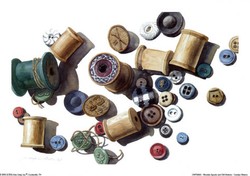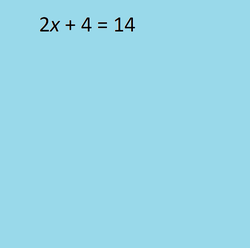
Developing a Deep Understanding of Multiplication in 3rd Grade Math
See what the common core state standards are for 3rd grade math and how you can help your child/student build a solid foundation for their education and career.
Four Critical Areas of Focus
 The common core state standards for 3rd grade math focus on four critical areas: multiplication and division of whole numbers; fractions, especially with numerator 1; understanding rectangular arrays and area; and two-dimensional shapes. Instead of introducing a large number of concepts, the common core standards aim to develop a deep understanding of basic areas. For example, in multiplication students learn to express problems in various ways and to identify all of the factors of a sum. This method will build a strong foundation for mathematical thinking in later years.
The common core state standards for 3rd grade math focus on four critical areas: multiplication and division of whole numbers; fractions, especially with numerator 1; understanding rectangular arrays and area; and two-dimensional shapes. Instead of introducing a large number of concepts, the common core standards aim to develop a deep understanding of basic areas. For example, in multiplication students learn to express problems in various ways and to identify all of the factors of a sum. This method will build a strong foundation for mathematical thinking in later years.
Practice to Master Basic Concepts
 Once concepts are introduced to 3rd grade math students, much practice is required in order for the children to thoroughly master the ideas presented. Various exercises presented in different ways help to expand the child's thinking. Using manipulatives to illustrate mathematical principles helps to clear up any confusion, since children tend to think in concrete terms.
Once concepts are introduced to 3rd grade math students, much practice is required in order for the children to thoroughly master the ideas presented. Various exercises presented in different ways help to expand the child's thinking. Using manipulatives to illustrate mathematical principles helps to clear up any confusion, since children tend to think in concrete terms.
Instead of simply memorizing multiplication facts, students work with numbers in various ways so they understand what the operation means. To understand the factors of a number like 36, they can use groupings of objects or snap blocks that help them see that multiples of particular numbers equal that sum.
One way of representing the principles behind multiplication include grouping objects like marbles in various ways to show 6 groups of 6, 4 groups of 9, 3 groups of 12, and so on. Learning to find the various factors in a sum is one of the steps toward later understanding division.
Bundles of straws can also be used to show that different groupings of an equal number can represent a particular sum. On some special days, children could perform edible math as a treat. Raisins, pretzels, small crackers, or cereal can be placed into small bowls containing an equal number of items to represent the operation.
Snap blocks can also be used to illustrate that 1 block of 36 equals 36; 3 blocks of 12 equal 36; 4 blocks of 9 equal 36; and 6 blocks 6 equal 36. Once they have this kinetic and visual experience, children will better understand a pencil-and-paper or digital representation of snap blocks in an online math game.
Further Development through Online Math Games
The experience of moving from concrete demonstrations to abstract expressions will deepen a student's understanding of mathematical principles. This is the sort of foundation that enables students to build their ability to deal with higher math. Further practice and development of concepts in 3rd grade math can be achieved through the use of online games. When the system automatically adjusts to the child's level and provides instant reinforcement and correction, this can be especially helpful.
Another advantage of online math games is that they can provide real-time feedback to the teacher, so he can provide immediate help to students who are struggling. A system that also allows students to play the math games at home helps to ensure they do not forget what was taught before they return to class.
Practice Makes Perfect!
Once students have developed a good understanding of the groupings involved in multiplication, they should practice multiplication facts until they are very fluent. Math games that require instant recall of facts help to motivate children in this effort. These games can be played in groups or pairings, or individually online. They should be followed up with paper and pencil exercises that reinforce the learning.
The more experience children have in expressing mathematical operations in different ways, the deeper their understanding of the process becomes. To educate the mathematicians and engineers of the future, we need to start with a solid foundation. Online games in 3rd grade math are one tool that teachers can use to promote complete comprehension of math processes.
Classroom Close-Up: Part 1. Inside Third Grade
Classroom Close-Up: Part 2. Planning a Third Grade Day
Shopping for 3rd Grade Math Help
You might also like
Buttons from the Rag Bag! Button Jar Math ActivitiesSave the buttons from discarded clothing and recycle them as fun, hands-on ma...
The Linear Equation and Related Equations and InequalitiesThis is a good place to start algebra, and give enough examples why the basic...






 Visual Learning Strategies: What to Look For in Math Learning Platformson 04/20/2012
Visual Learning Strategies: What to Look For in Math Learning Platformson 04/20/2012
 Blended Learning in the Elementary School Classroomon 04/18/2012
Blended Learning in the Elementary School Classroomon 04/18/2012
 Graphic Design Programs: Five Things You Didn't Knowon 03/27/2012
Graphic Design Programs: Five Things You Didn't Knowon 03/27/2012
 The Best-Kept Secrets of College Education: Community Colleges to Financial Aidon 03/27/2012
The Best-Kept Secrets of College Education: Community Colleges to Financial Aidon 03/27/2012



What are your Thoughts on 3rd Grade Math Education?
You bring up a good point! The food approach could maybe be used by parents at home in certain cases. Thanks for stopping by again :) More articles to come @sheilamarie
Another nice math article, Educationinfo4U. Unfortunately, because of food allergies, some schools are starting to frown on using snacks in the classroom, but their benefit as a motivator can be seen in your examples. I guess choosing which snacks are used and knowing your students well is the key.